This August, George Poteet and his Speed Demon crew set yet another Streamliner record at Bonneville, making it the fastest wheel-driven internal-combustion engine vehicle on the planet. We get the inside scoop from a Kiwi on the pit crew
Words: Marcus Gibson Photos: Team Speed Demon
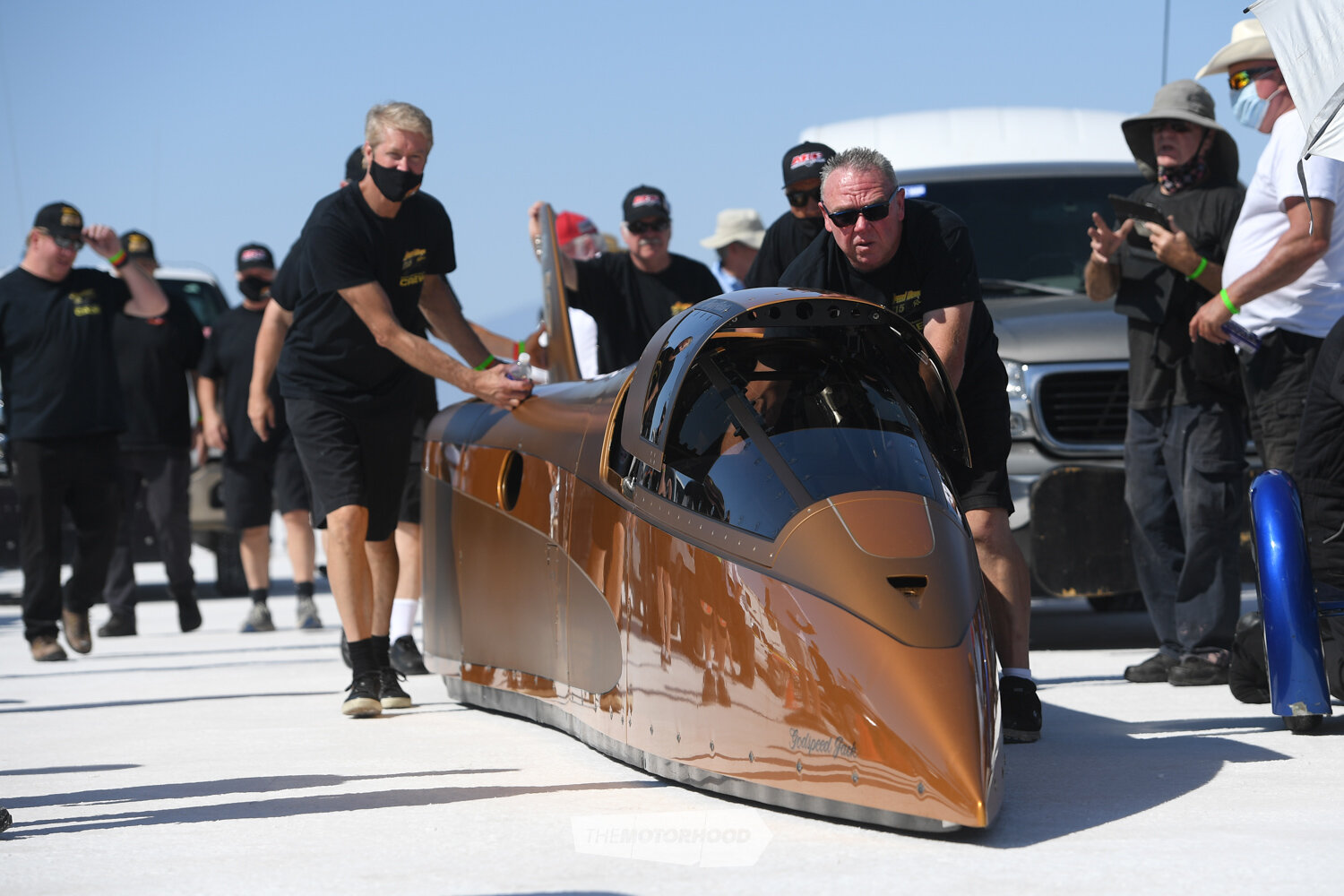
George Poteet has spent more time driving over 400mph in his life than everyone else on the planet combined. He is the nine-time Hot Rod magazine trophy holder for the fastest pass during Speed Week and holds records in six streamliner classes, including the most recent AA/BFS record, making him the fastest man in a wheel-driven car on the planet!
The legacy of Speed Demon is one that stretches back to 2007 when the first version of the car was debuted. It ran for seven years before it was destroyed in a crash at over 373 mph. Only nine and a half months later, the new car was built and ready to go, not that the fit and finish would in any way allude to that. This new car is sleeker, safer, and cleverer in every way — it truly is the culmination of everything the crew have learned from years of racing on the salt.

Built by crew chief Steve Watt at his Maxwell Industries, the major success of the car, and what makes it somewhat unique, is the team’s philosophy around engine choice. The team uses multiple engines that can be easily swapped out depending on the record they are chasing. They go for the biggest possible cubic displacement and utilize a pair of 88mm Gen 2 Precision Promod turbos, which do the heavy lifting. Out on the salt, life before 350mph is all about managing traction, so the extra torque of a big block only complicates that. The team regularly swap out four different engines, all with differing displacements, but the recipe remains almost the same, with Dart Little M blocks, Dart Little Chief 14 Degree heads, Diamond pistons, and a compression ratio of approximately 9.5:1. The stroke and bore are typically the only things changed. And just like a modern sprint car team, in which the engine is self-contained for easy swaps, the team employ this tactic here, with engine swaps typically taking less than an hour.
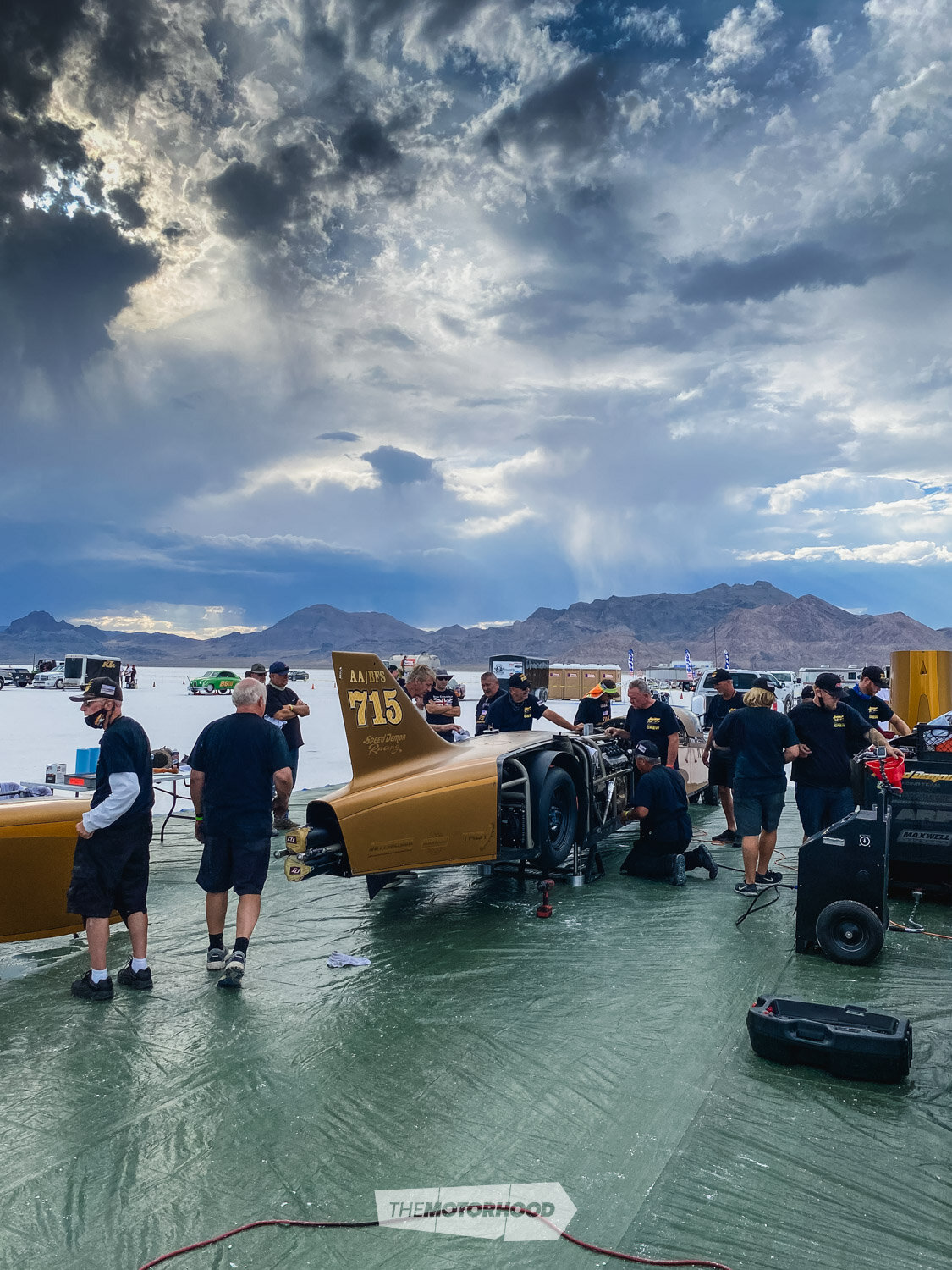


All this was working well until George decided that he wanted to go after the big one. “For two years, at the end of every phone call, George would say, ‘Steve, we need a record over 450,’” explains crew chief Steve. The record George had his eye on was the all-out fastest record for wheel-driven internal-combustion cars, which for the AA/BFS class is set at 417mph. This is a class that requires an engine capacity of over 501 cubes, well above the capacities of their current small block fleet, meaning it was time to master the Rat. As with all the previous engines, Ken Dutweller would screw the big block together, this time starting with a Dart Big M block specced with CGI hardening, which doubles the casting strength. The rotating assembly features a 4.25-inch Callies Ultra billet crankshaft, Auto Verdi H-beam connecting rods, Diamond pistons, Total Seal rings, and ARP 625+ main caps. With the body of the streamliner only ever designed to fit small blocks, it was touch and go to see if a big block would fit in between the narrow rails (46 inches at rear wheels) — it’s the advancement in head technology that has allowed that. In this case, these are the compact Dart Pro 1 20-degree CNC heads with 451cc intake runners, which are off-the-shelf apart from a slight mill to reduce the combustion chambers to 86cc and the modifications by Jessel to run its rocker stands. Valves are 2.40 OF Titanium Ferra on the intake and 1.8-inch Inconel on the exhaust. The springs are PAC-1356 with Titanium retainers, and the cam is a custom 280/296 tool-steel roller cam from Comp.
On top sits a billet intake manifold that is purposely oversized to reduce low-end torque. It’s a similar shape to the scoop you’d find on a pro stock, with an oval Visner scoop that swallows a massive 2300cfm of boosted air. Much like the intake, there are trick engineering pieces on every square millimetre of this thing, and we could fill the entire magazine with the details, if we were so inclined. Another is the modular water-to-air billet PWR intercooler, which has billet end tanks and a replaceable core, should it be damaged from turbo failure. The turbos, however, are not really stressed in this application, with only around 20psi required to do the numbers. At this boost level, Shane T was able to extract around 2000hp, although it has made as much as 3155.6hp at 8300rpm and 2017lb·ft on 35psi of boost. The amount of power it will see all comes down to the condition of the salt, and traction control is used from the moment it pulls away from the push truck and up until it hits 400mph.


Our man on the ground is young expat Kiwi Scotty Farmer, who is living (and racing speedway) in the US on a sporting visa, which is sponsored by Steve. A fitter and turner by trade, he has filled his days at Maxwell Industries and soon found himself fulfilling a life goal of attending Speed Week. He never envisioned that he would be part of the biggest team as a member of the Speed Demon crew. Covid travel restrictions meant far fewer spectators and even fewer teams competing his year, with zero international teams. That did have its upside for the Speed Demon crew: run waiting times were reduced, something that would come into play with the team suffering several setbacks during the week. The first of which was an engine failure on day one during the third run, as Scotty explains: “Number-four cylinder leaned out and destroyed a piston. This caused an oil fire that completely destroyed the wiring loom. Our wiring guy G went back to the hotel to rebuild the loom.”
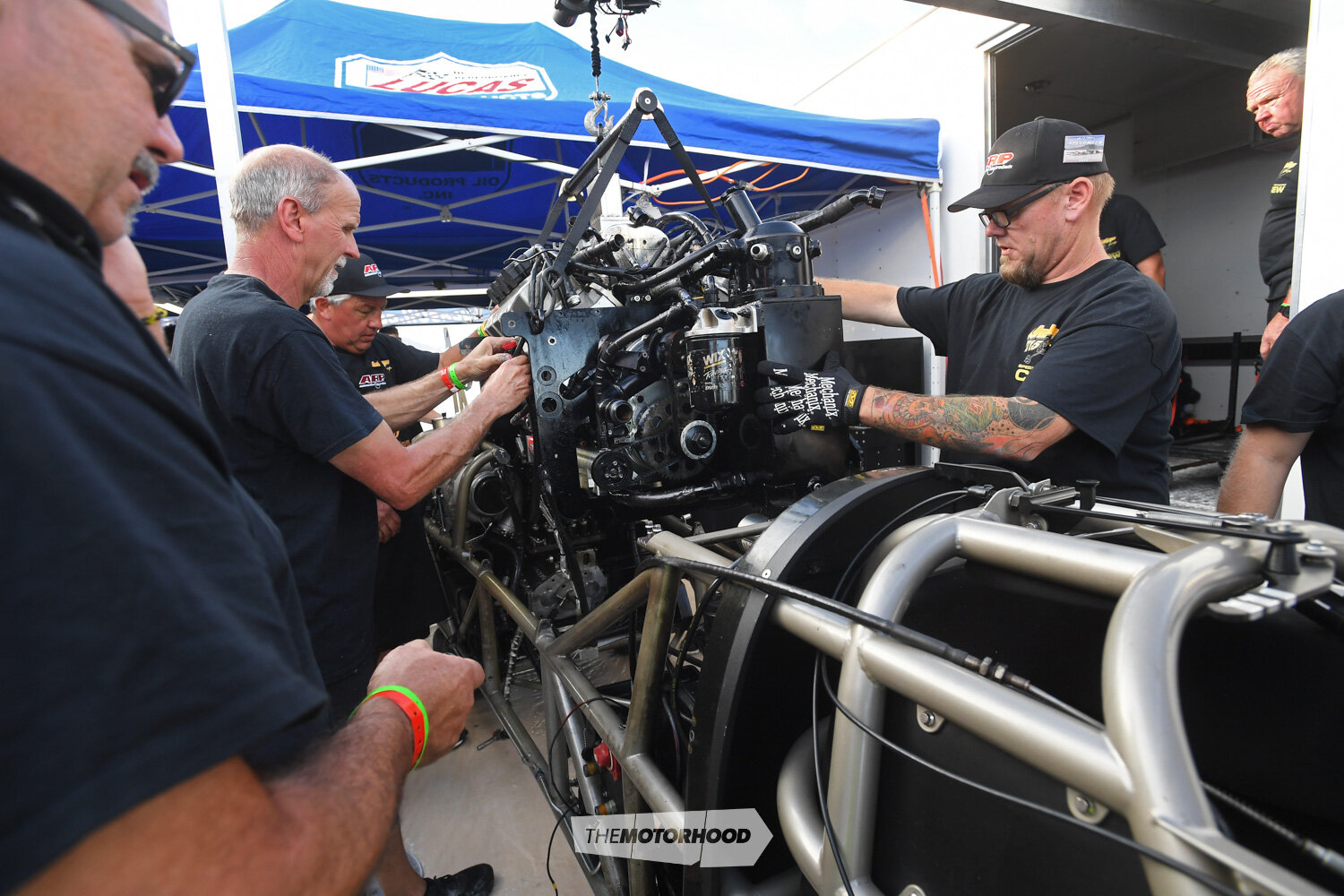
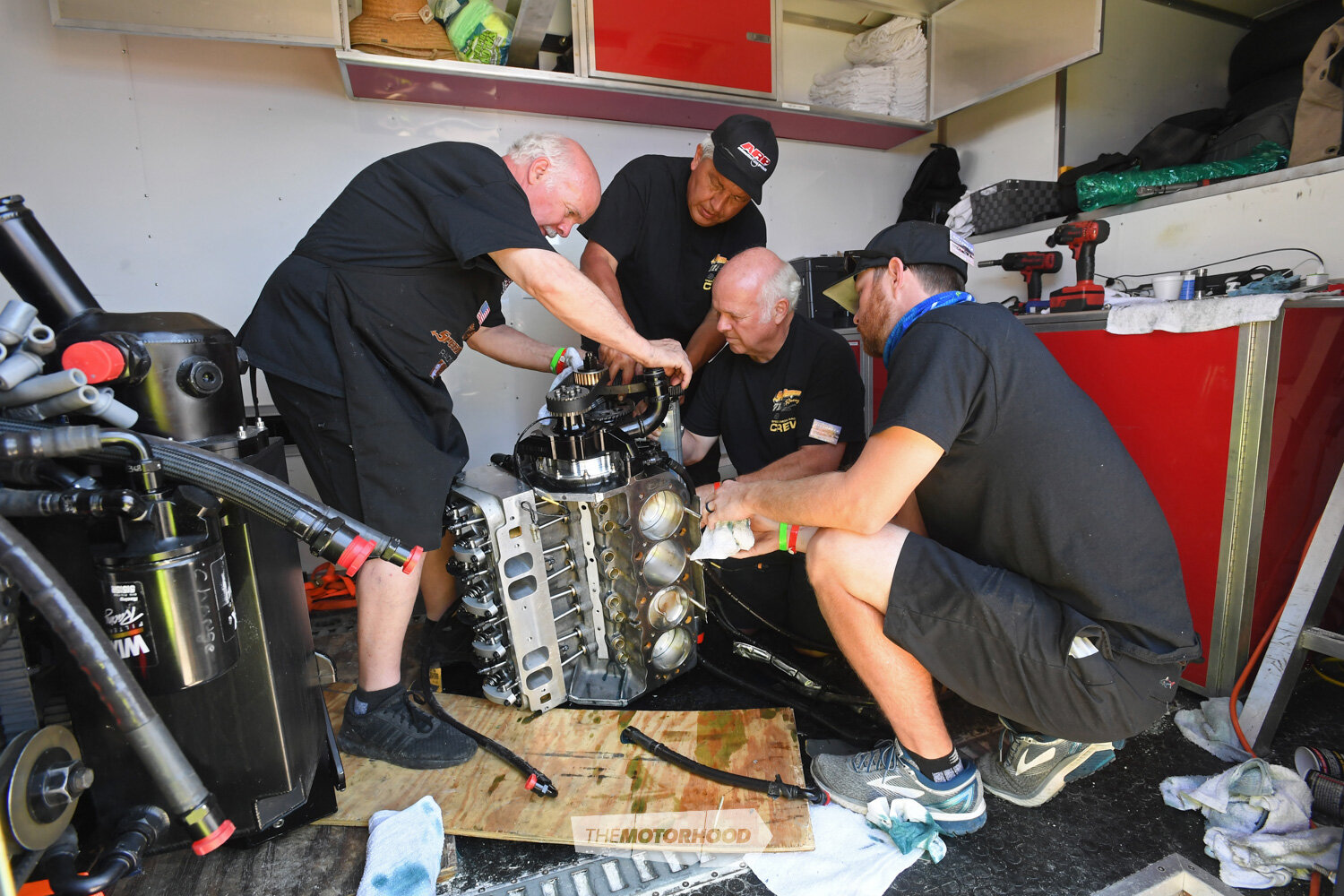

In that time, the LS motor was pulled out of the trailer — the team realized that they had a spare piston and they could rebuild the big block in the same amount of time it would take to repair the wiring harness. No, not back in Ken’s clean shop, but right there on the trailer floor. “There is salt 100 per cent everywhere through that engine,” says Scotty
Not even 12 hours after the failure, the big block–powered Speed Demon was back on the start line, ready to make an attempt at the record. This run was not to be, as the pinion shaft in the Don Ferguson Jr. quick-change rear end stripped. A new rear end goes in, and the team again lines up to run. This time, the car dropped several cylinders. “We saw that we went 447mph on seven cylinders, and thought, We can fix this and go faster,” says engine builder Kenny Duttweiler. The problem was diagnosed, and the Speed Demon returned to the starting line for a sixth run. Finally, things clicked and it went faster than the existing record, so the Speed Demon was off to impound for the night and would have a shot at setting the record the next morning.
The majority of the team is made up of speedway guys, so the streamliner was designed around ease of service — and everyone is used to spinning spanners in the wild, so to speak. The team has only a four-hour window to carry out a complete service, go over data, make tweaks, and see to any repairs needed, to have it ready for a return run in the morning. To make it more difficult, all this is done in impound, so everything has to be carried here from the pits.




Early mornings at Speed Week are reserved for record return runs, and George made a successful return run to nab the record at 439mph. Celebrations were short as they came for a 450-plus miles-per-hour record, meaning that it was straight back out for another crack. This time around, the first run saw George go 469.298mph, then the following morning he backed that up with an even faster 470.733mph for a new record of 470.015mph. These speeds are the average speed over the fifth-mile of the run, meaning the exit speed is typically higher. On the last run, this was 481.576mph. That’s the fastest speed ever for George, Speed Demon, and any piston-driven vehicle on the planet!
With the week not yet over, it was a short celebration then on to the next goal, as Scotty explains: “You won’t get much out of George. He is a really chilled, really mellow Southern guy. But you could tell he was happy with getting the record — that’s been a lifetime goal to run over 450mph. He just doesn’t yell and scream; he’s a quiet old guy, so we sort of yahoo’d for a bit then got back to business.” This meant swapping out the engine for a small-capacity 256ci V8 to chase the E-class record of 348mph.

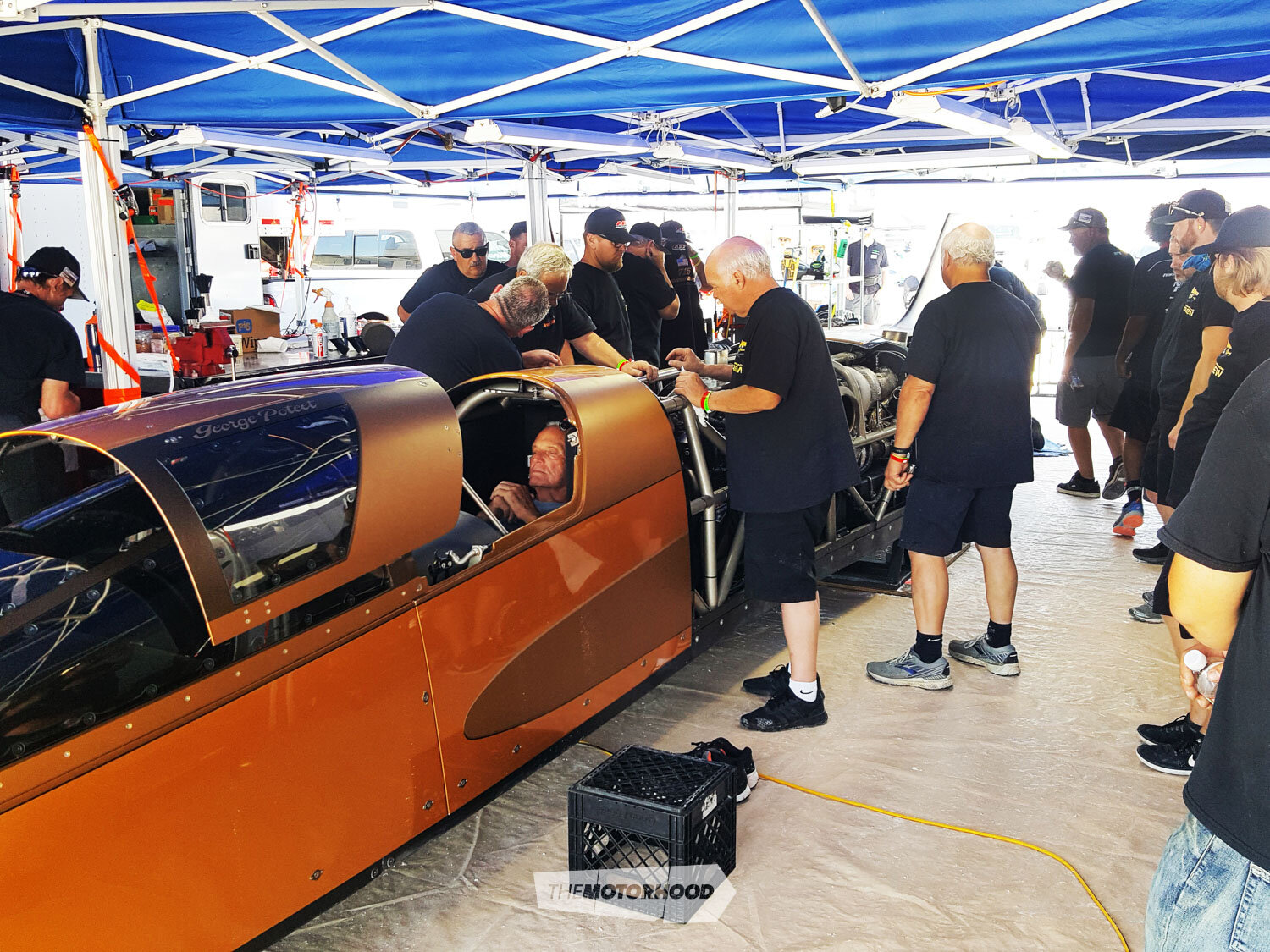

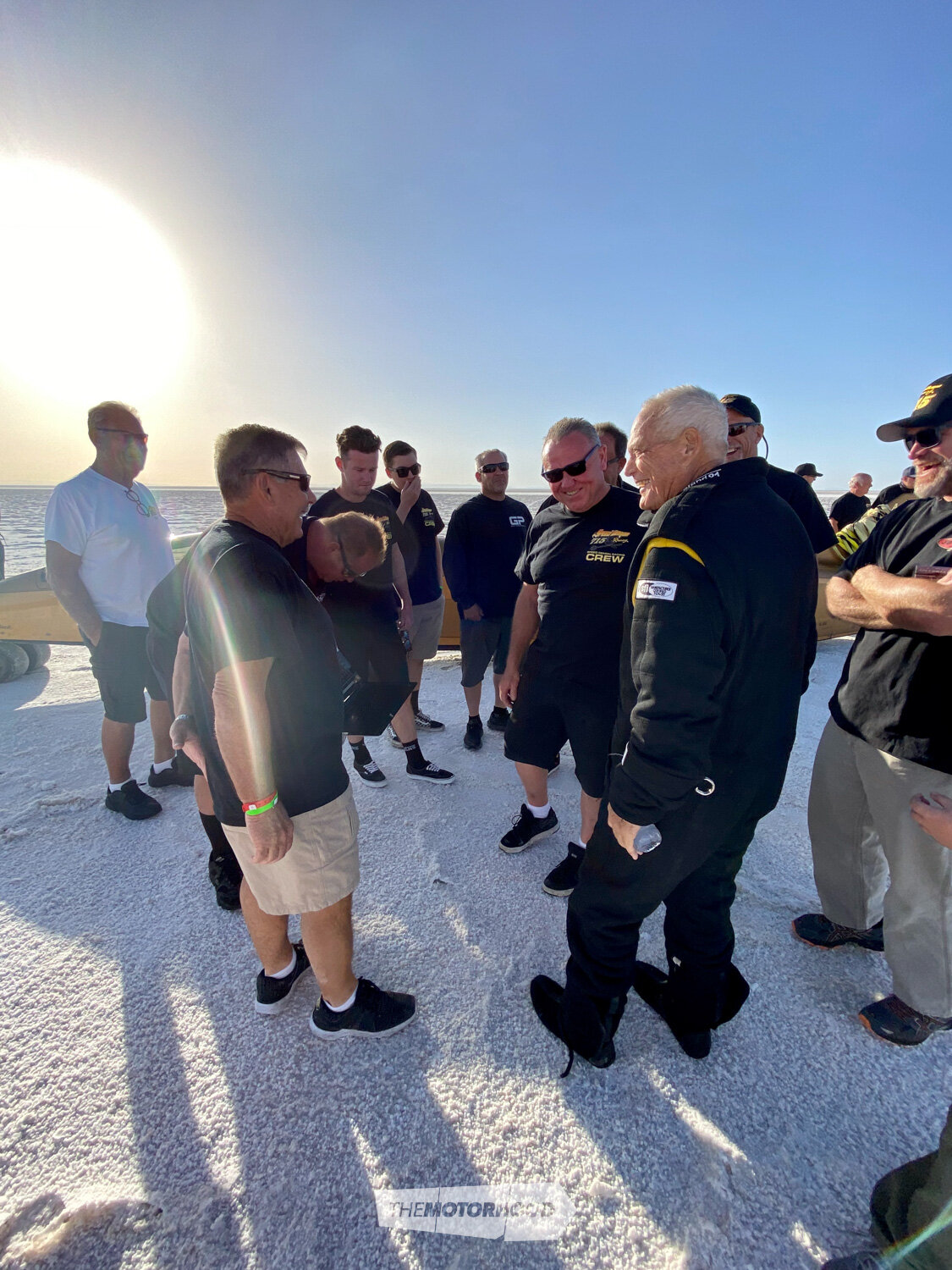

But it wasn’t to be; the E-motor suffered oil issues where it was filling the rocker covers with oil, so the run was aborted. And, with that, Speed Week was over for the Speed Demon crew. Scotty assured us that they’d partake in some proper celebrations once back in the hotel room that night. At the time of writing, we are now two weeks post Speed Week, and the clean up continues on the Speed Demon; the car is being stripped to the bare chassis and that sticky salt is being removed from every surface, including inside the big blocks. No doubt plans are being put in place to chase the next goal. With 481mph under their belt, surely that means 500mph is the focus for 2021?


This article originally appeared in NZV8 issue No. 186




